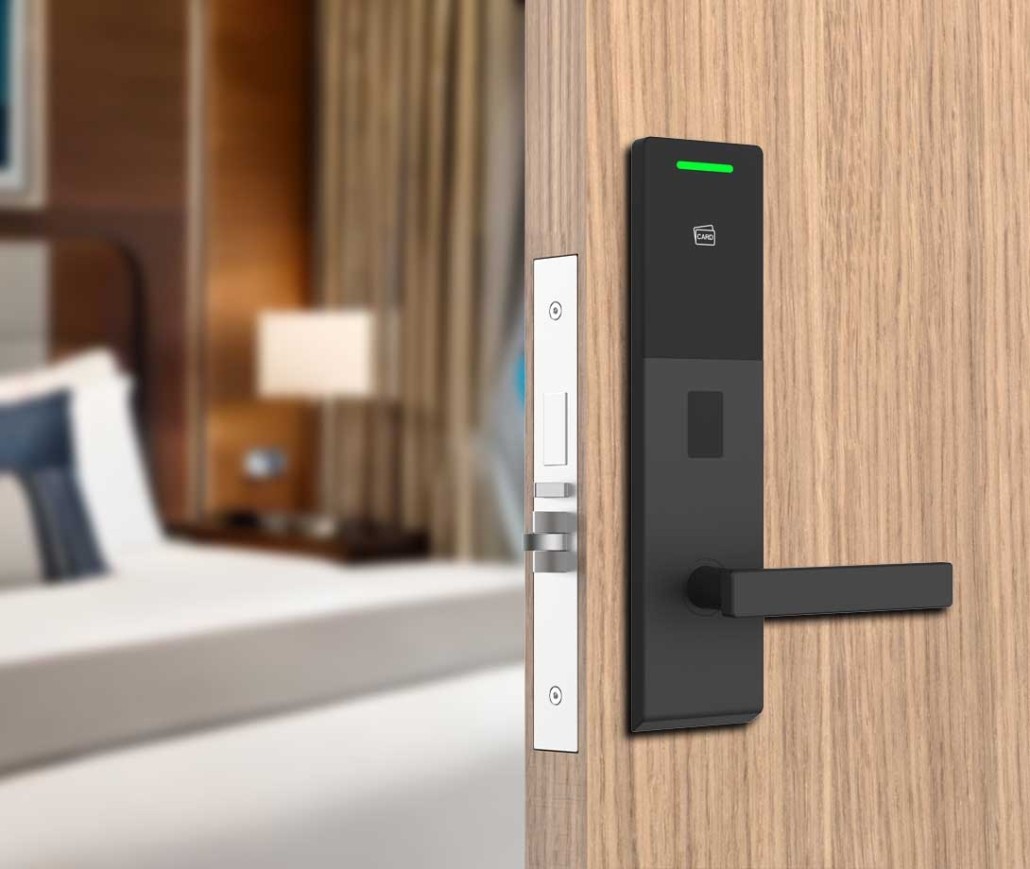Hotel door locks are essential for guest security and convenience. Unlike traditional locks that use physical keys, modern hotel locks are electronic, offering features like keycard access, remote management, and audit trails. But how do these locks get power? Understanding their power sources is crucial for hoteliers, travelers, and tech enthusiasts.
In this article, we’ll explore the different ways hotel door locks receive power, including:
- Battery-Powered Locks
- Hardwired (Wired) Locks
- Hybrid Power Systems
- Energy-Efficient Technologies
By the end, you’ll have a clear understanding of how these locks stay operational and what happens when they lose power.
1. Battery-Powered Hotel Door Locks
The most common power source for hotel door locks is batteries. These locks are designed to be low-energy, often using AA or lithium batteries that last between 6 months to 2 years, depending on usage.
Why Batteries Are Popular:
Easy Installation – No need for complex wiring.
Reliable Backup – Many locks still function during power outages.
Cost-Effective – Cheaper than wired systems for retrofitting older hotels.
How Do Battery-Powered Locks Work?
- The lock remains in a low-power sleep mode when not in use.
- When a guest swipes a keycard or enters a code, the lock wakes up and verifies access.
- Some locks use RFID or Bluetooth, which consume minimal power.
What Happens When the Battery Dies?
- Most locks warn hotel staff via LED indicators or management software.
- Some models allow manual override (e.g., a physical key or external battery pack).
- In emergencies, hotels may use a 9V battery boost (like car jump-starting).
2. Hardwired (Wired) Hotel Door Locks
High-end hotels or newly constructed buildings often use hardwired electronic locks. These are connected directly to the hotel’s electrical system, eliminating battery replacements.
Advantages of Wired Locks:
No Battery Changes Needed – Continuous power supply.
Real-Time Updates – Instant syncing with the hotel’s PMS (Property Management System).
More Features – Can support advanced tech like biometrics or mobile keys.
How Are They Powered?
- Connected to low-voltage wiring (usually 12V or 24V).
- Often linked to a centralized access control system.
- Some use Power over Ethernet (PoE) for data and electricity in one cable.
What If There’s a Power Outage?
- Backup batteries or UPS (Uninterruptible Power Supply) keep them running.
- Some models switch to offline mode, storing logs until power returns.
3. Hybrid Power Systems
Some hotels use hybrid locks, combining batteries and wired power for extra reliability.
How Hybrid Locks Work:
- Primary Power: Wired connection for constant energy.
- Backup Power: Batteries in case of electrical failure.
This setup is common in luxury hotels where downtime is unacceptable.
4. Energy-Efficient Technologies
To extend battery life, modern locks use:
- Energy-Harvesting (e.g., kinetic energy from turning the handle).
- Solar-Powered locks (rare but emerging).
- Ultra-Low-Power Bluetooth (BLE) for mobile key systems.
Conclusion
Hotel door locks primarily rely on batteries or wired power, with hybrid systems offering the best of both. Battery-powered locks are the most common due to their simplicity, while wired locks suit high-tech hotels. Energy-efficient designs ensure these locks remain secure even during outages.
Next time you check into a hotel, you’ll know exactly what keeps your door locked—and how it stays powered!
Post time: May-21-2025


